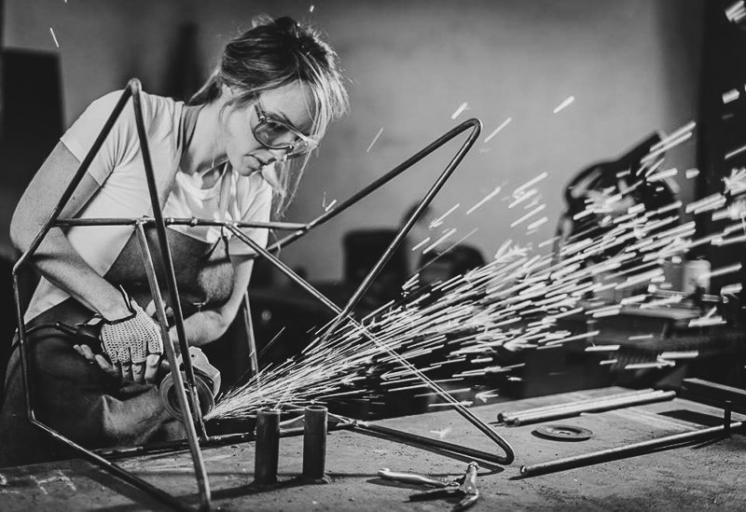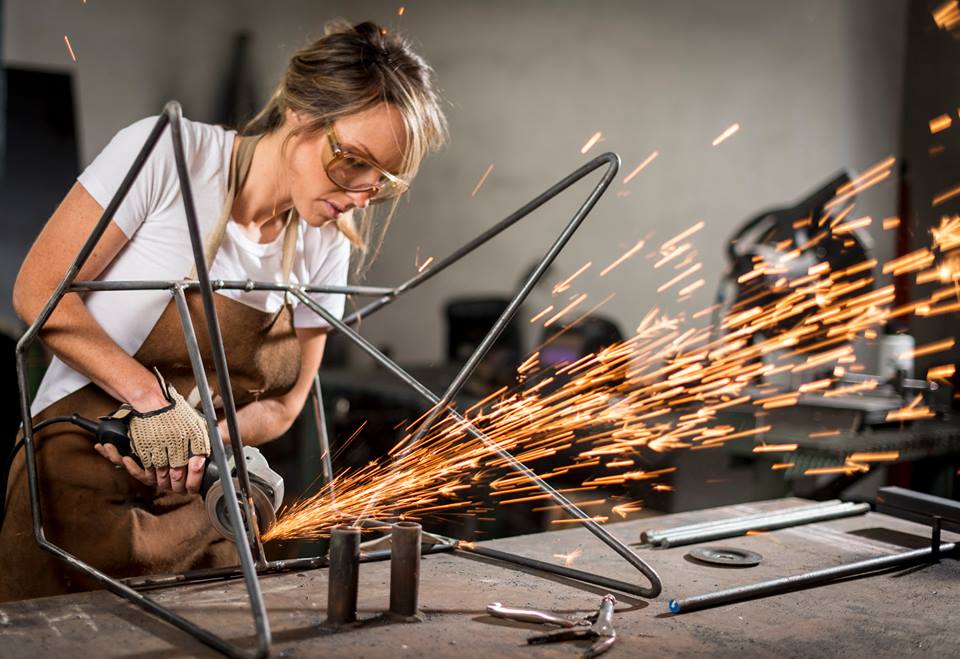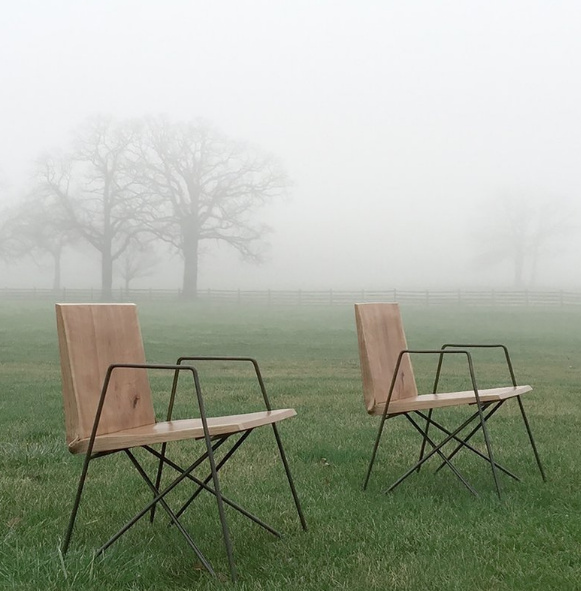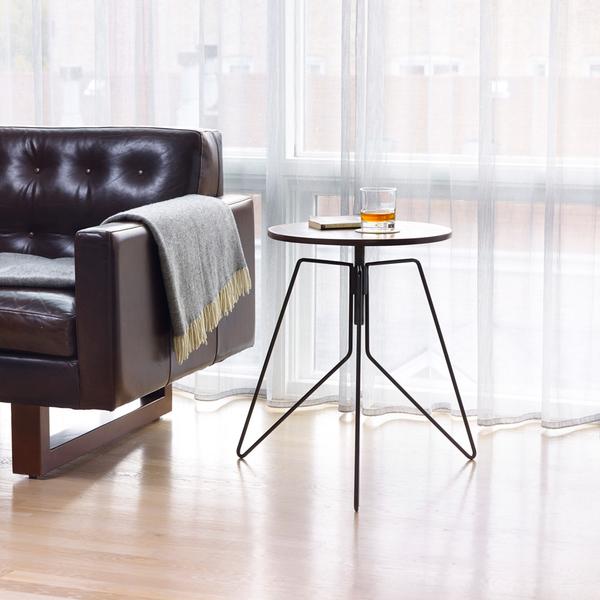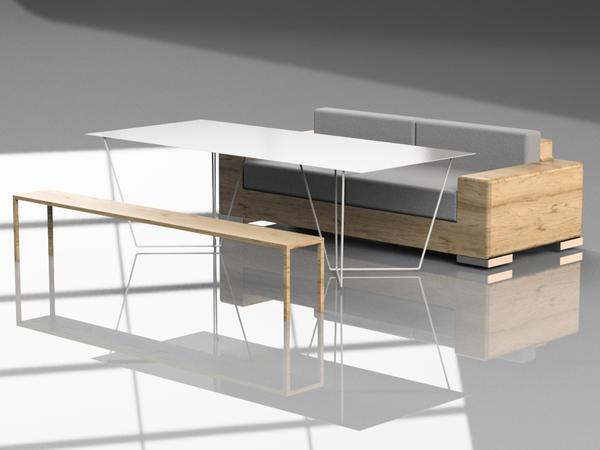Greta de Parry
“Haters gonna hate. Makers gonna make.”
-Greta de Parry
When asked about her entry into the world of woodworking, Greta de Parry describes her experience as “less of a moment, more of a natural evolution”.
For de Parry, the process of becoming an esteemed woodworker was a delicate balance between learning the craft and gaining confidence in her abilities. Armed with an MFA in Sculpture and Designed Objects from The Art Institute of Chicago, and a passion for artfully designed furniture, de Parry dove headfirst into the world of woodworking for the practical, everyday life.
What makes de Parry unique is her distinct desire to physically construct the world around her. She dreams of a house that she would build with her own two hands, adorned with handmade and beautifully crafted wood furnishings. She revels in the thought of processing “every single piece of wood from start to finish… every single floor board, every piece of furniture.”
Design is About Intuition
The design process for de Parry begins with a few small sketches, and ends with expertly crafted models. Her greatest tool in this process? “I’m just letting my intuition lead the way; building what feels right, finding a tangible balance.” de Parry does not abide by any specific rule of design, she prefers to build things that feel right to her. She believes that good design is the core of a successful piece. “A good design can withstand the test of time and the churn of stylistic trends.”
Don’t Fear Failure
As a woman in the woodworking industry, de Parry has encountered her share of challenges. She believes that failure is imminent in the creative sphere, though it should not be feared.
It takes time to perfect your style and technique, and de Parry believes that you are the only one who can bring your ideas and dreams to life. Physically, the work she does can be labor intensive and grueling and in turn she has been the brunt of many pieces of doubtful or critical commentary.
Her Advice to Young Designers?
“Strength is a characteristic that transcends gender. Show the world how strong you are, and don’t let the critics affect the way you approach your craft.”
Keep it honest. Keep it simple. Make it beautiful. Make it last. That is Greta de Parry.
Q: Describe the moment you decided to become a woodworker?
Less of a moment, more of a natural evolution; a gaining of confidence while growing a skill-set.
Q: If you were handed any project in the world, what would it be? Who would you like to create something for? Where would it be located? What materials would you use? Would it be a collaboration? With who?
I would collaborate with my husband in designing and building our dream home and work space. I think it would the ultimate satisfaction to make everything in the house ourselves – process every single piece of wood from start to finish, lay every single floor board, make every piece of furniture…it makes me excited just thinking about it. We’d use local woods felled within a 50 mile radius, and it would be located at the foot of a mountain. Ski in ski out (obviously).
Q: What is the inspiration behind your most recent project/creation/object?
I recently designed and built two unique, 11’ x 3’, solid live-edge desks using wood from a single fallen oak tree. The clients were an advertising firm in Chicago, and they really cared about the origin of the wood, my process in making, the story (aka dream clients). The results were outstanding. It was an incredibly rewarding project.
Q: Walk me through your creative process.
My creative process starts in the shop. I’ll draw some loose sketches on paper without dimensions, and then build it in quarter or half scale. Since I don’t have any dimensions at this point in the process, I’m just letting my intuition lead the way; building what feels right, finding a tangible balance. It’s very ad lib at first, but as the concept develops I hone in on the specifics and details. Obviously the more complex the project is, the most important it is to scope out and map what you’re doing, but I really like the freedom at first.
Q: What design rule do you love to break?
I think it’s really important to know what’s happening in the world of design, but I don’t like to follow trends. Good design will withstand the test of time and never fall out of style.
Q: What technology in your industry do you totally geek out on? This could be a software, a machine, a material, etc.
I really geek out on all things Festool. They’re beautifully made tools and a dream to operate. The Porsche of power tools.
Q: How has technology changed the way you work? This can be material innovation, software, how they gather inspiration…
I used to make everything myself by hand, which was, at first, super fulfilling. It was exciting seeing momentum and popularity growing with my products, and it was also validating as an artist, knowing that people were really liking what I was putting out there. It was a great learning experience, but making everything by hand was extremely inefficient and unsustainable from a business perspective. In order to grow, I needed to begin working with outside fabricators to help scale manufacturing. Now, in the amount of time it took for me to make 2 wooden barstool seats by hand, a CNC (Computer Numeric Control) machine whips out 20. The level of efficiency is incomparable, and it’s allowing me to spend more time in the shop doing what I really love: creating new work.
Q: How has being a woman in your industry/career been challenging? What have you learned from those specific challenges?
Being a woman in a male dominated field has definitely been challenging at times—perhaps acutely challenging working in a physical, labor-intensive profession. I think we all have the tendency to judge a person’s ability based on their looks/gender first, instead of merit (I am completely guilty of this myself). In a nutshell, what I’ve learned is this: haters gonna hate, makers gonna make. If someone makes a comment about my capability, it doesn’t bother me in the least. It’s familiar territory to any woman who is carving a niche in a male-dominated industry.
Q: What is the one piece of advice you would give to young women who are just getting started?
Follow your design intuition and don’t be afraid to fail. When you’re putting stuff together in the beginning there’s so much failure. Nothing just happens. But don’t give up! You’re the only one that can bring your ideas and dreams to life, so keep trying.
